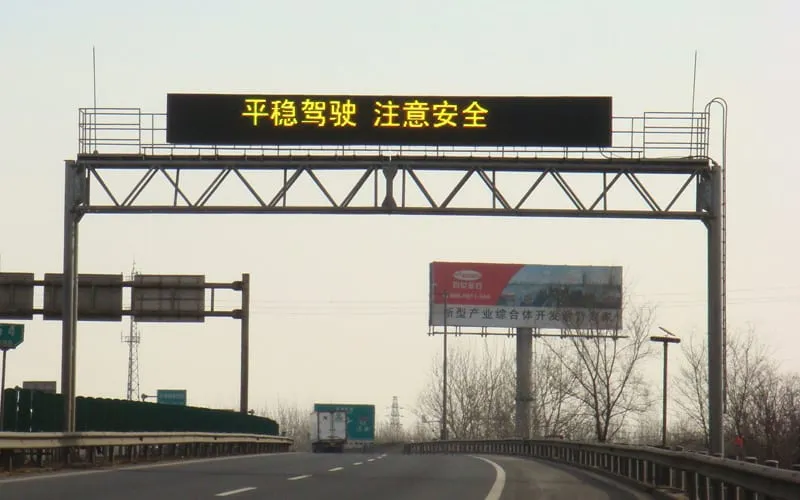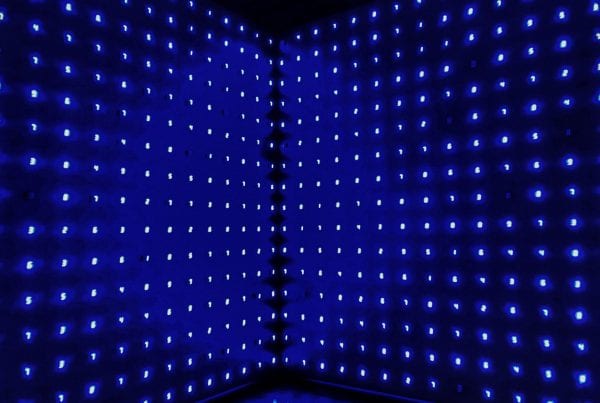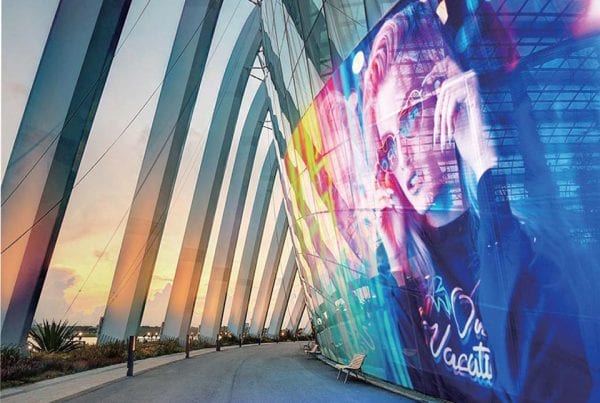LED traffic signs are an important part of modern roadways thanks to their many benefits. However, like any technology, they come with their own set of considerations.
In this article, we explore 11 facts about LED traffic signs, covering disadvantages, advantages, and important information to remember before making a purchase.
Before we jump into the 11 facts, let’s very briefly review why LED signs are used on roadways today.
Why Are LED Signs Used in Modern Traffic Systems?
LED traffic signs are popularly used because they perform multiple necessary functions, including:
- Providing real-time updates on traffic conditions
- Warning drivers of road construction or accidents ahead
- Offering guidance for navigation and lane control
- Enhancing visibility during adverse weather conditions
The ability of LED traffic signs to change messages quickly makes them valuable in managing traffic flow, responding to emergencies, and addressing changes in road conditions.
Are you looking to buy LED traffic signs? See our Fixed Variable Message Sign page for more information!
11 LED Traffic Sign Facts To Remember Before You Buy
If you have any questions, call us! Otherwise, keep reading to find out what you need to know before buying an LED traffic sign.
1. There Are Two Main Categories of LED Traffic Signs
Traffic signs can be broadly categorized into two types: fixed and variable message signs (VMS).
Fixed Traffic Signs
Fixed Traffic Signs are permanent signs installed at specific locations. They display static information such as speed limits, warnings about road conditions ahead, and directions. These signs do not change their message and are designed to provide consistent, long-term guidance to drivers and pedestrians.
Variable Message Signs (VMS)
Variable Message Signs (VMS), on the other hand, are electronic signs that can change the messages they display. These are used to provide real-time information to road users about traffic conditions, weather advisories, accidents, road work ahead, or any other conditions that might affect travel.
What About Fixed Variable Message Signs?
The term “fixed variable message signs” might seem contradictory at first, but it refers to a traffic sign that has a permanent location (hence “fixed”) but is capable of displaying variable messages.
Fixed variable message signs are often used on highways to warn of congestion, speed limit changes due to weather conditions, accident information, Amber alerts, and other traffic-related information that varies over time.
2. The Initial Cost of LED Traffic Signs Can Be Higher Than Traditional Signs
The initial cost of LED traffic signs is higher than traditional signs due to several key factors:
- Advanced LED Technology: LED signs incorporate sophisticated light-emitting diodes and electronic components that provide their dynamic display capabilities.
- Durable Materials: LED signs are made with higher-cost materials like polycarbonate or aluminum for the housing.
- Energy-Efficient Design: The design and engineering required to make LED signs energy-efficient involve additional costs.
- Integrated Control Systems: LED signs often come with integrated software and control systems that allow for remote management and dynamic content updates, adding to the overall cost.
But there is good news! See below. ⬇️
3. LED Traffic Signs Can Use Up To 75% Less Energy
LED bulbs save energy by operating at lower voltage and current compared to conventional lighting methods.
They also allow for precise control over the light spectrum emitted. While traditional lighting methods often require filters to achieve specific colors or wavelengths, LEDs can produce the required colors directly, avoiding the need for additional energy consumption.
4. LED Traffic Signs Have A Lifespan of Up To 100,000 Hours!
The longevity of LED traffic signs is achieved through a few key factors:
LED traffic signs utilize solid-state lighting technology, which means they have no moving parts or delicate filaments that can wear out over time.
Thermal management systems are integrated into some LED traffic signs to dissipate heat effectively. This prevents excessive heat buildup, which can degrade the components.
LED traffic signs are also generally constructed using durable materials that can withstand harsh environmental conditions.
Durable YAHAM LED Traffic Signs
LED traffic signs (Fixed Variable Message Signs) at YAHAM, for example, are IP65 pressure washing, harsh weather, and electromagnetic interference-free! They offer wireless and remote control, as well as self-diagnoses and failure reports.
5. LED Traffic Signs Can Have Visibility Issues In Direct Sunlight
While LED traffic signs offer numerous advantages, they do face a common challenge – visibility issues in direct sunlight. Bright sunlight can sometimes overpower the illumination of LED signs, making them less noticeable to drivers.
To address this challenge, LED traffic sign manufacturers sometimes employ advanced anti-glare and anti-reflective coatings on sign surfaces to minimize the impact of direct sunlight.
6. LED Traffic Signs Utilize Advanced Dimming Technology to Optimize Visibility Day and Night
Some manufacturers also incorporate adaptive brightness control systems into their LED signs to deal with high and low light conditions. These systems automatically adjust the sign’s brightness levels to ensure optimal visibility.
Other systems utilize a time-based solution, meaning they follow pre-programmed schedules to adjust the sign’s brightness levels throughout the day and night. Other systems are capable of using ambient light sensor data to adjust the power supplied to the LEDs as needed.
7. LED Traffic Signs Support Dynamic Content, Changing for Weather, Traffic, or Emergency Situations
To solve the issues caused by sunlight, clouds, and other weather conditions, some LED traffic signs utilize advanced optical designs and high-contrast color schemes to enhance readability under varying lighting conditions.
These schemes typically use white, yellow, or red against dark backgrounds.
8. Sudden Temperature Changes Can Cause Condensation Inside LED Traffic Displays
Condensation in LED traffic signs caused by temperature changes can potentially lead to short circuits and damage to electronic components within the display.
This occurs when water droplets create electrical pathways between conductive components within the display, creating a bridge where no connections should be made. There are also other issues caused by moisture, such as corrosion.
To safeguard against these issues, manufacturers implement various strategies.
9. High-Quality LED Traffic Signs Are Resistant to Extreme Temperatures from -40°F to +165°F
LED Traffic Signs’ exceptional temperature resistance is achieved through a combination of specialized materials, design considerations, and rigorous testing protocols.
The outer enclosure of high-quality LED traffic signs is typically constructed from rugged aluminum alloys or polycarbonate plastics, which are selected for their resistance to thermal expansion and contraction.
LED traffic signs are also often equipped with heatsinks, heat spreaders, or heat-dissipating components that help dissipate excess heat.
Additionally, to prevent moisture ingress, dust, and other environmental contaminants, high-quality LED traffic signs feature effective sealing and gasketing.
10. Equipped with Self-Diagnostic Features, LED Traffic Signs Alert Maintenance Teams to Issues Automatically
Certain LED traffic signs employ embedded microcontrollers and sensors to continuously assess the sign’s internal components and performance. In case of any irregularities, the self-diagnostic system triggers real-time alerts through network protocols or remote monitoring interfaces.
These alerts are relayed to maintenance teams, specifying the nature and location of the issue. Maintenance personnel can then swiftly identify and address the problem.
11. New advancements in LED technology are leading to more robust LED Traffic Signs
Cutting-edge developments in LED technology are reshaping the landscape of LED traffic signs.
These include:
- Advanced semiconductor materials
- State-of-the-art thermal management systems
- Robust aluminum alloys
- Weather-resistant coatings
- Upgraded sealing techniques
- Precision optical designs for better light distribution and focus
- Smart control systems
Contact YAHAM
Looking for a quote for an LED traffic sign? Contact us today and speak with one of our experts!




